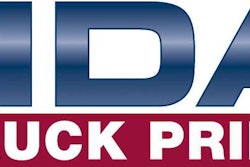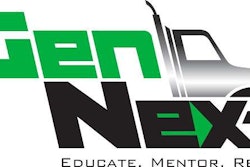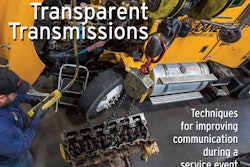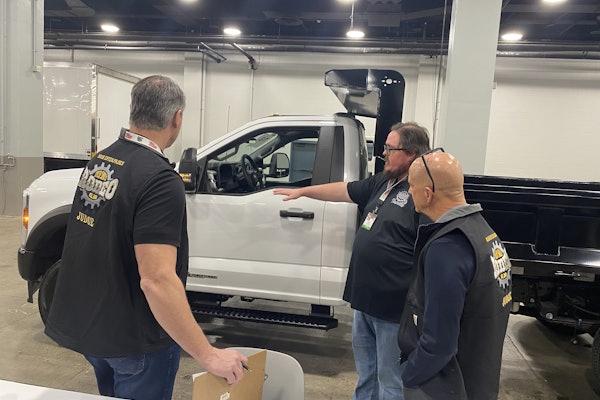With National Tire Safety Week coming up next week, Bendix Commercial Vehicle Systems, LLC, has produced a series of technical tips for tire care that have a direct impact on the effective operation of higher-level safety systems, from brakes to collision mitigation.
“If you think of the approach to safety system maintenance like a hierarchy, tire upkeep – much like the actual tires on a vehicle – is the foundation upon which other systems rest,” says Jon Intagliata, Bendix’s product manager for Tire Pressure Monitoring Systems (TPMS). “Getting the best performance from drum brakes, air disc brakes, full-stability systems, and advanced driver assistance technologies requires tires that are in good shape and at the correct inflation pressure.”
National Tire Safety Week is scheduled for May 28 to June 3, 2017, and is sponsored annually by the Rubber Manufacturers Association to help raise awareness of tire care and maintenance issues.
Under Pressure
Bendix says maintaining the right tire inflation is critical for several reasons.
Because underinflated tires experience higher temperatures and greater stress, they present an increased risk of failure. Industry research has indicated that about 90 percent of tire blowouts can be traced to underinflation, and almost half of all emergency service road calls are tire-related. According to research by the American Trucking Associations’ Technology & Maintenance Council (TMC), underinflation by 20 percent results in a 30 percent reduction in tire life.
“Advanced safety technologies really do rely on maintenance of basic components like tires to ensure best performance on the road,” Intagliata says. “If you’ve invested in systems that help prevent or mitigate forward collisions, or that intervene through braking power to help prevent rollovers, the last thing you want is to reduce their effectiveness through something as easily preventable as poorly inflated tires.”
Since tire pressure is affected by temperature, and temperature increases during normal vehicle usage, the SmarTire Tire Pressure Monitoring System (TPMS) by Bendix CVS for tractors and SmarTire Trailer-Link TPMS by Bendix CVS for trailer systems both use wheel-mounted sensors to continuously monitor temperature – as well as pressure – inside each tire. Bendix says this enables the system to provide a deviation value that shows the amount of overinflation or underinflation from the tire’s cold inflation pressure (CIP), automatically taking into account any increase in pressure due to temperature, and adjusting driver alerts accordingly.
As a result, these systems not only address changing situations that can affect pressure – such as whether a truck has been parked for some time or has traveled hundreds of miles – but also provide earlier warnings of potential tire problems, Bendix says. (SmarTire is unable to warn of an instantaneous tire blowout due to a road hazard or other immediate physical breaching of the wheel or tire. Operators must follow OE and tire manufacturer guidelines for tire fitment, replacement, inspection, and repair of wheels and tires.)
“Another pressure-related issue is that of dual-tire imbalance,” Intagliata says. “When you’ve got a pair of tires side-by-side on an axle, if one is running at a lower pressure, it’s essentially got a different circumference than its neighbor – which means that as the axle rotates, that tire’s going to drag and experience excess wear, increasing the chance that it’s going to fail prematurely. That’s why we recently added a programmable alert to SmarTire that will let the driver or a technician know when a set of duals exceeds a prescribed percentage deviation in pressure between the two tires.”
Uptime and Fleet Strategies
Fuel and tires are typically among a fleet’s largest expenses – underinflation by as little as 10 percent can result in a 1.5 percent drop in fuel economy, according to the TMC – so increasing mileage and tread life pays off. Bendix says a tire pressure monitoring system helps on both fronts, but also helps address tire-related downtime costs. Real-time information provided to drivers and maintenance technicians warns of tire problems in advance, eliminates the need for manual pressure checks, and makes inspections and maintenance more efficient.
Connecting a system like SmarTire to a back-office fleet management tool like SafetyDirectfrom Bendix CVS offers still more strategic benefits. Bendix says SafetyDirect – a web portal that allows fleet owners to analyze real-time, wirelessly transmitted safety information – can provide tire pressures, temperatures, and alerts to fleet management. This makes it possible for fleet maintenance teams to plan specific vehicle service in advance, and allows for more in-depth analysis of factors such as tire replacement frequency, tire repair downtime, and occurrences of roadside breakdowns due to tire failure, the company says.
Also worth noting: Underinflated tires are a Compliance, Safety, Accountability (CSA) inspection violation, which can impact a fleet’s CSA scoring.
“Tire inflation is just about the most basic form of maintenance there is, but not paying the right attention to it can have serious effects on several levels of vehicle and fleet safety,” Intagliata says. “Tire Safety Week is a good time to talk about it, but fleets and drivers need to keep it in mind every day, on and off the road.”











